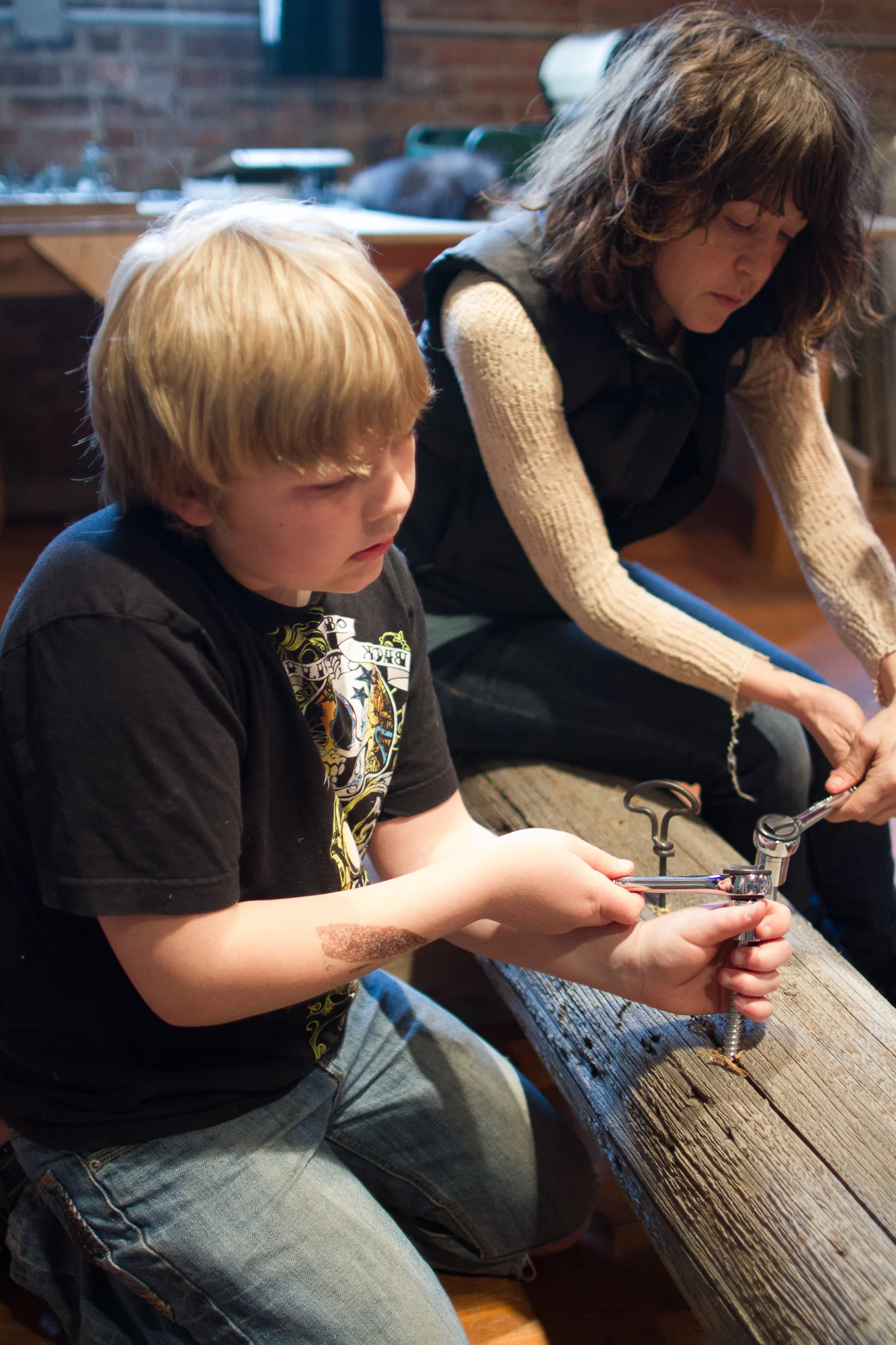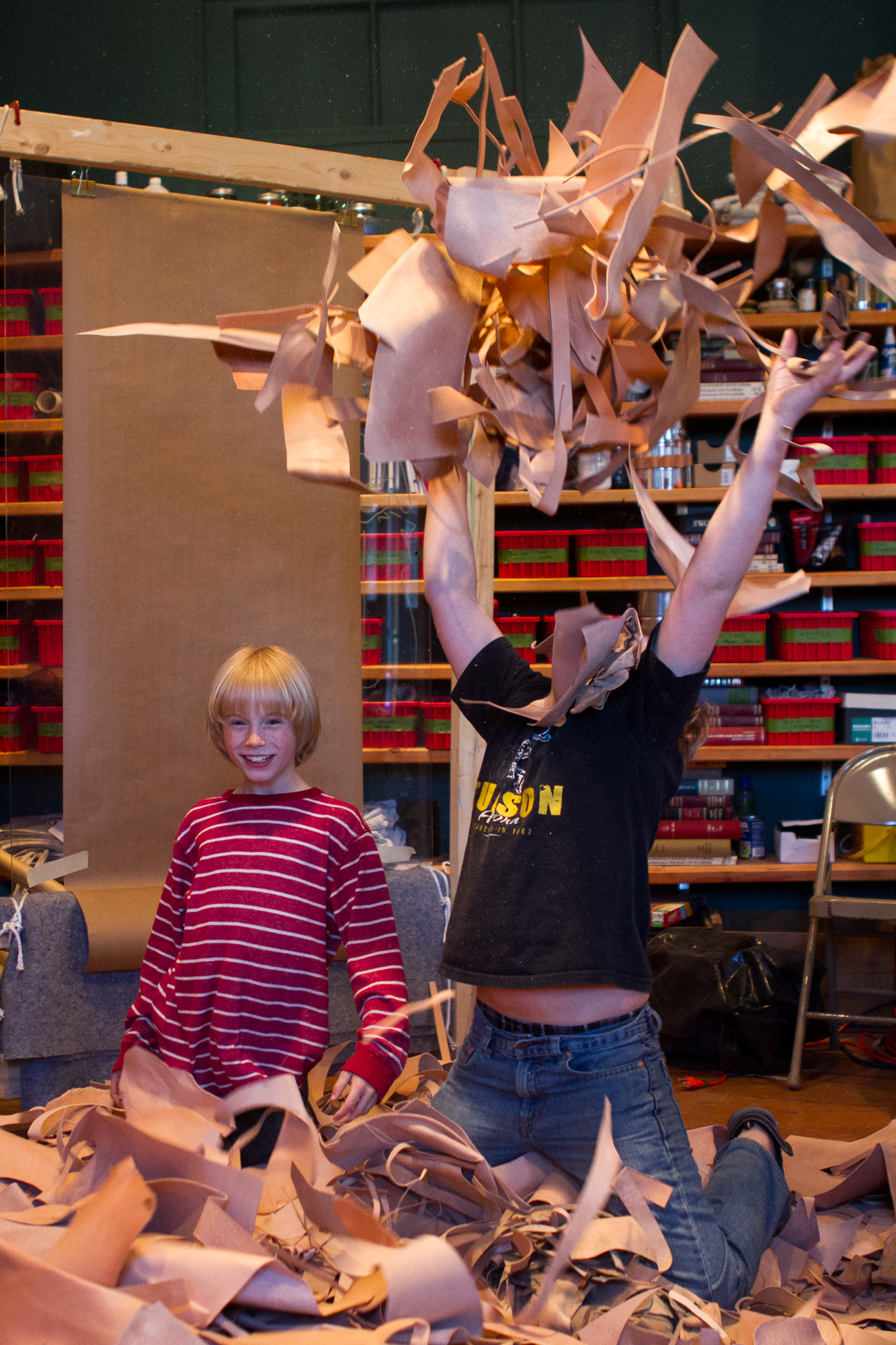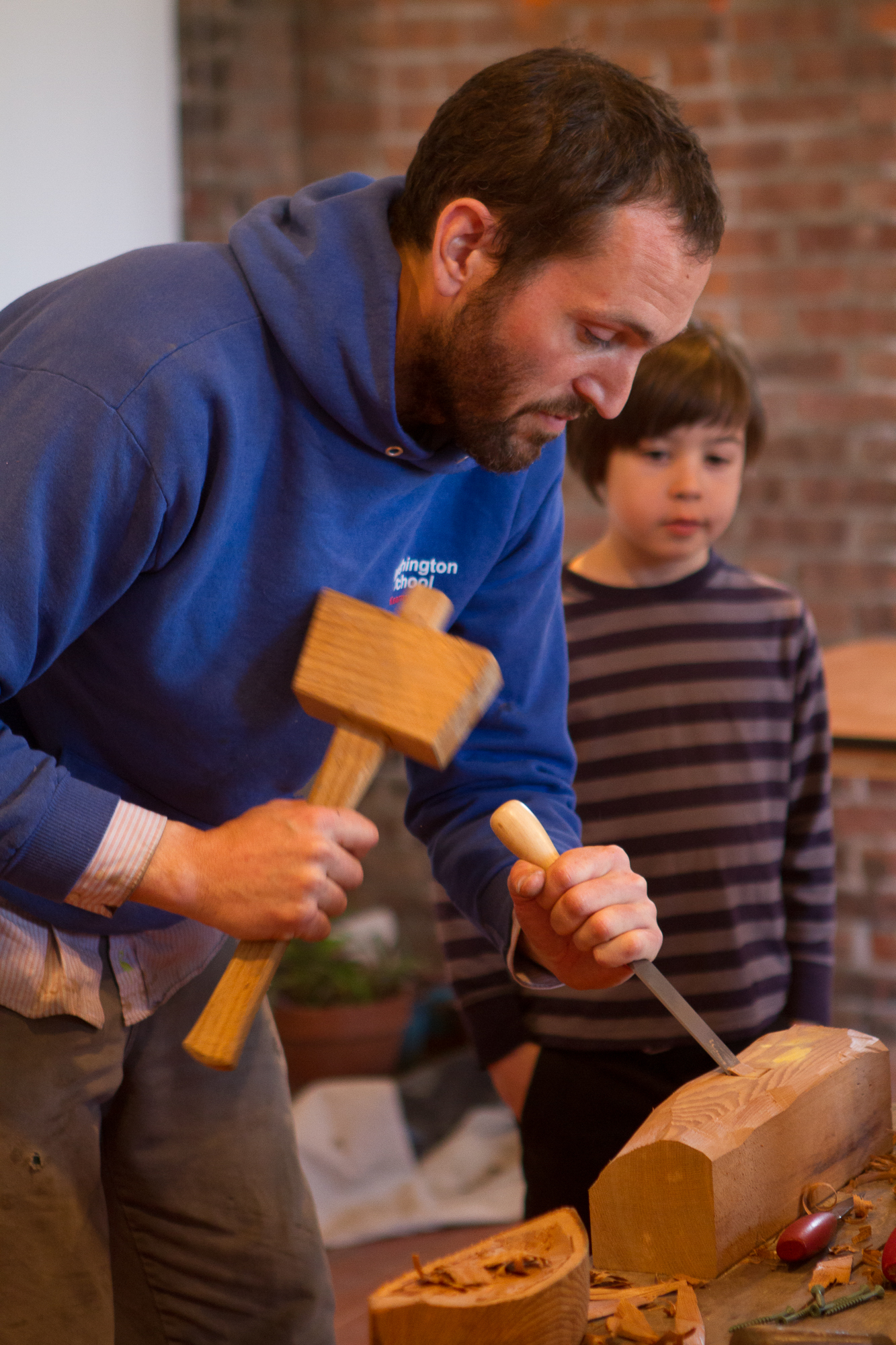THE HUDSON SLOOP CLUB
COME BUILD BOATS WITH US | SPRING 2013
Explore the ancient, universal, organic shape of the boat, and how the boat shaped history, both locally and globally. Using hand tools, we will learn the artistry of shaping and curving wood, learning to work with the grain, in order to build a traditional planked wooden boat. Moments of quiet focus working on the boat together will be broken up with play, stories, films, sea shanties, and the building of several model boats, out of a variety of materials.
The shape of a boat is an ancient shape. It was arrived at independently by many cultures: wherever humans, trees or vegetation, and water have coincided on the earth, the boat has emerged in some form. The basic lines of the boat are universal: they arise from the laws of hydrodynamics, the same laws that have shaped the bodies of marine life through evolution. Traditional wooden boats from all cultures have structures that mimic forms in nature, often of similarly sized creatures of the ocean. It is no accident that wooden boats have an anatomy similar to that of a fish, whale or shark: the same natural forces exert pressure on boats and sea creatures alike, and the solutions refined by boat builders over the centuries mimic the optimisations arrived at across millennia through the trial-and-error of genetics: the front should be narrow to break through the water, the exterior must be smooth and durable, ribs push outward against water pressure and are held in place with a spine, a moveable fin at the rear helps change direction. These design principles apply equally well to fishes as they do to boats.
In this ten week workshop, we explored the boat not only in it’s universal form, but in the specific context of the Hudson River Valley, with a look at the cultures and histories of its watergoing peoples. An exploration of the boat connected us with the Mahican peoples, descendants of the first inhabitants of the Hudson Valley; the story of first contact between the Mahicans and Henry Hudson, as he sailed up the Hudson River in his vessel the Half Moon; and the story of the whaling trade that put Hudson on the map.
CREATING NECESSITIES, DEMANDING CHARACTER
The core activity of this workshop was building of a traditional planked boat under the guidance of Nick Zachos, a local craftsman trained in boatbuilding at the Carpenter's Boat Shop in Pemaquid, ME. This boat-building process requires much from the young builder. It asks for an understanding of proportion, it requires spatial thinking. It demands things from the character of the builder as well; patience, perseverance, and an awareness of self. An understanding of numbers and mathematics is, however, not necessary to build a traditional wooden boat. One could conceivably perform all the necessary enlargements involved in making a boat from a schematic using purely spatial, non-numerical processes: tracing, transferring marks made on pieces of string onto lengths of wood, eyeballing distances and angles, and so forth. But numeracy and a grasp of mathematics makes the job dramatically easier. The process of “lofting” a boat (transferring the lines of the boat from a schematic to the actual wood) offers so many opportunities for a child to need measurement and number: moments in which the child reaches for these things of their own volition, in which number and measurement are their companions, not their adversaries. The lofting process provides a bridge between shape and number, between spatial thinking and mathematical thinking, between the schematic and the object, 2D and 3D.
PLAY IN THE SHADOW OF WORK
To complete our boat, the young builder must become proficient in several of the physical competencies of a woodworker: drilling, cutting, sanding, shaping, hammering, screwing, in addition to all that the process of lofting entails. Many of our participants will come to the workshop having little to no experience in these things. Children will be able to practice their skills on a “sandbox” boat: a scrap-wood construction where children can practice different woodworking skills in a safe environment, driving 100 screws into our sandbox boat so that they might earn their opportunity to drive 10 critical screws into the actual vessel. Moments of quiet focus working on the boat together will be broken up with play, stories, films, sea shanties, and the building of several model boats, out of a variety of materials.


























































































































































































































































